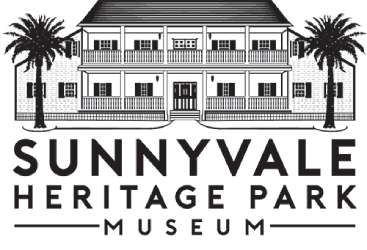Although many female citizens of the United States of America take their right to vote for granted, it was not always thus. The current year, 2020, marks the 100th anniversary of the 19th Amendment to the United States Constitution, the amendment which gave women the right to vote.
Known as women’s suffrage, the organized movement to give women voting rights began in 1848 in Seneca Falls, New York, under the leadership of Elizabeth Cady Stanton and Lucretia Mott. In 1886, Susan B. Anthony joined Stanton to form the American Equal Rights Association, an organization for white and black women and men, dedicated to the goal of universal suffrage. Four years later, suffrage groups merged to form the National American Woman Suffrage Association (NAWSA) electing Ms Stanton and Ms Anthony, as the first and second presidents, respectively.
Suffragists were hampered by many anti-suffrage groups whose members, both male and female, did not want to grant suffrage to women, firm in their belief that allowing women to vote would not only “cause a loss of status and privileges for their sex”, it would also upset the voting structure of the country. The “Antis” argued their protests around several main themes:
A woman’s place is in the home – A mother’s influence is needed in the home. “She can do little good by gadding about in the streets and neglecting her children.”
Women’s health would be jeopardized – Women should not vote because they are not “built” for it. According to a leading theory at the time, mental exertion could jeopardize reproductive health.
Women’s brains make them unsuited to the rigors of voting – Anti-suffrage cartoons poked fun at the reasoning ability of women. One curious postcard (below) pictured the interior of a woman’s head, filled only with love letters, puppies, hats, babies, chocolates, and the faces of admiring young men.
After 1900, the fight for women’s suffrage grew into a mass movement. Suffragists used tactics which included marches, conventions, White House picketing, and addresses to subcommittees of Congress. As the original leaders aged, they were replaced by equally passionate younger leaders, including Carrie Chapman Catt and Alice Paul. Suffragists managed to gain the right to vote in a handful of states, the first being Wyoming in 1890. But the main objective, a suffrage amendment to the United States Constitution, continued to elude them.
Women’s Suffrage In California
California’s suffrage movement greatly increased its campaign during the early 1900s. Suffragists spoke statewide, in gatherings ranging from rallies to parades and small meetings to picnics, often beginning speeches as follows: “I appeal to you as a mother, a grandmother, a garment worker, a school teacher, a trained nurse . . .” Joined by suffragists in other states, Californians produced posters, postcards, pennants, playing cards, buttons and shopping bags to advertise their crusade. Electric signs, billboards and lantern slides flashing messages at night were also used to help the cause. Women in every county organized clubs and associations to win support from prominent men, newspaper editors, businessmen, and clergymen.
The early returns on election day, October 10, 1911, revealed that women’s right to vote in California had lost by a landslide in the San Francisco Bay Area and passed by only a small margin in less-populated Los Angeles and surrounding areas. But a few days later, after the time-consuming vote count was completed, the tally had changed. The pre-election strategy of heavy campaigning in rural counties paid off; the measure passed statewide by 3,587 votes. California became the sixth state in which women could vote equally with men, nine years before the 19th Amendment was ratified nationally. California’s success brought new life to state campaigns across the nation.

Designed by artist Bertha Boye, this popular suffrage poster featured a woman against the backdrop of the Golden Gate and the setting sun.
Women’s Suffrage in Santa Clara Valley
San José resident, Sarah Knox Goodrich (1827-1903) worked tirelessly for women’s rights. She founded the San José Suffrage Association in 1869 and entertained Elizabeth Cady Stanton and Susan B. Anthony in her home on North First Street. Sarah’s primary reason for giving women voting rights was expressed in a slogan adopted from the Boston Tea Party leaders a century earlier: “No taxation without representation”. She wrote many articles for local journals and newspapers advocating women’s rights and made generous donations to women’s causes.
Sunnyvale Suffragist
Sophie P. Durst (1859-1951), founder of the Sunnyvale Women’s Club in 1907, was Sunnyvale’s leading suffragist. An active speaker, Sophie drew large audiences with her speeches, which emphasized the tie-in between the Women’s Christian Temperance Union and women’s suffrage. In one of her speeches, described as “exceptionally logical and convincing,” Mrs. Durst focused on the liquor laws and liquor traffic which so largely affected the happiness of many women, pointing out that such laws were “entirely controlled by men and by the least desirable element of men.” She spoke of the ballot as the “God-given right of both sexes.”
The Passage of the Amendment
In 1919, after more than seventy years of active campaigning, the 19th amendment passed by razor-thin margins in both houses of the United States Congress. From there it went to each state, for the required ratification by thirty-six states. On August 18, 1920, with Tennessee the thirty-sixth state to ratify, the 19th Amendment became the law of the land. The amendment prohibited both the federal government and all of the states from denying women the right to vote.
The Nineteenth Amendment to the U.S. Constitution – The right of the citizens of the United States to vote shall not be denied or abridged by the United States or by any state on account of sex.
Written by Linda Kubitz

